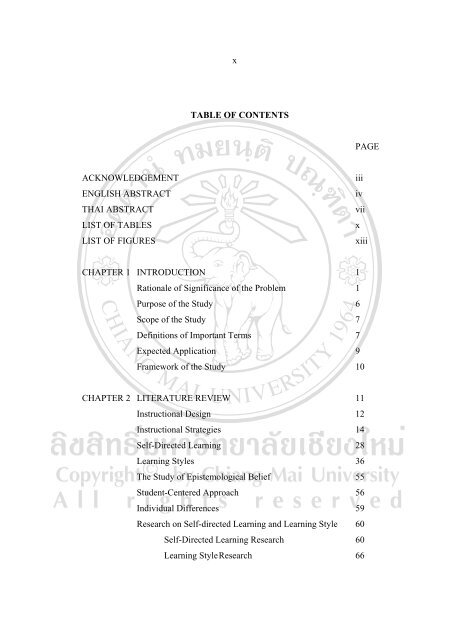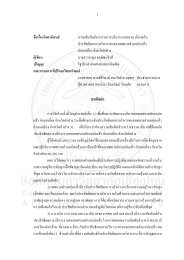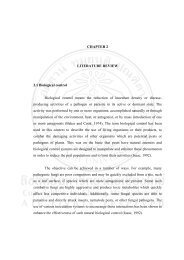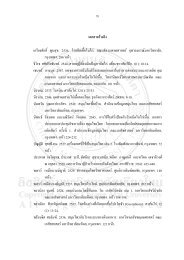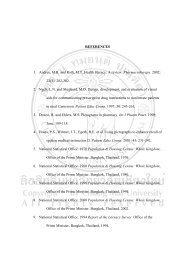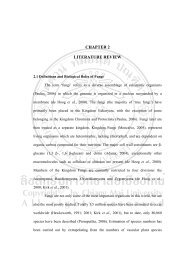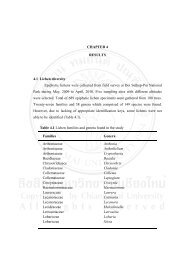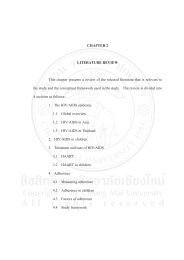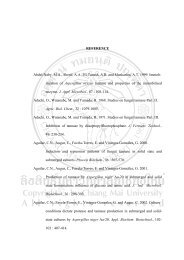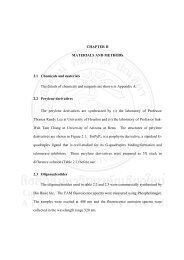x TABLE OF CONTENTS PAGE ACKNOWLEDGEMENT iii ENGLISH ...
x TABLE OF CONTENTS PAGE ACKNOWLEDGEMENT iii ENGLISH ...
x TABLE OF CONTENTS PAGE ACKNOWLEDGEMENT iii ENGLISH ...
You also want an ePaper? Increase the reach of your titles
YUMPU automatically turns print PDFs into web optimized ePapers that Google loves.
x<br />
<strong>TABLE</strong> <strong>OF</strong> <strong>CONTENTS</strong><br />
<strong>PAGE</strong><br />
<strong>ACKNOWLEDGEMENT</strong><br />
<strong>ENGLISH</strong> ABSTRACT<br />
THAI ABSTRACT<br />
LIST <strong>OF</strong> <strong>TABLE</strong>S<br />
LIST <strong>OF</strong> FIGURES<br />
<strong>iii</strong><br />
iv<br />
vii<br />
x<br />
x<strong>iii</strong><br />
CHAPTER 1 INTRODUCTION 1<br />
Rationale of Significance of the Problem 1<br />
Purpose of the Study 6<br />
Scope of the Study 7<br />
Definitions of Important Terms 7<br />
Expected Application 9<br />
Framework of the Study 10<br />
CHAPTER 2 LITERATURE REVIEW 11<br />
Instructional Design 12<br />
Instructional Strategies 14<br />
Self-Directed Learning 28<br />
Learning Styles 36<br />
The Study of Epistemological Belief 55<br />
Student-Centered Approach 56<br />
Individual Differences 59<br />
Research on Self-directed Learning and Learning Style 60<br />
Self-Directed Learning Research 60<br />
Learning Style Research 66
xi<br />
CHAPTER 3 RESEARCH METHODOLOGY 82<br />
Population and Sample 82<br />
Research Instruments 82<br />
Stage of Instrumental Construction 82<br />
Methodology and Data Collection 91<br />
Data Analysis 96<br />
CHAPTER 4 RESULTS <strong>OF</strong> DATA ANALYSIS 97<br />
The Specific Pattern of Instructional Strategy<br />
for Higher Education Learners with Different<br />
Learning Styles 97<br />
Effects of Using Instructional Strategies on<br />
Self-Directed Learning Ability 105<br />
Effects of Using Instructional Strategies on<br />
Learners’ Learning Achievement 111<br />
Learners’ Opinions toward Instructional Strategies 116<br />
CHAPTER 5 CONCLUSION DISCUSSION AND SUGGESTIONS 120<br />
Conclusion 123<br />
Discussion 125<br />
Suggestions 131<br />
BIBLIOGRAPHY 133<br />
APPENDICES 160<br />
APPENDIX A List of Experts’ Names 161<br />
APPENDIX B Learning Style Inventory 166<br />
Self-Directed Learning Readiness Scale 172<br />
Learners’ Opinions Questionnaire 179<br />
VITA 182
xii<br />
LIST <strong>OF</strong> <strong>TABLE</strong><br />
<strong>TABLE</strong><br />
<strong>PAGE</strong><br />
1 Dichotomies in Leaning Style 67<br />
2 Researchers and their findings on learning styles 72<br />
3 Mean, SD and t-test to compare SDLRS scores<br />
before and after study of ST Learner (N=23) 106<br />
4 Mean, SD and t-test to compare SDLRS scores<br />
before and after study of SF Learner (N=22) 107<br />
5 Mean, SD and t-test to compare SDLRS scores<br />
before and after study of NT Learner (N=13) 108<br />
6 Mean, SD and t-test to compare SDLRS scores<br />
before and after study of NF Learner (N=13) 109<br />
7 Mean, SD and t-test to compare SDLRS scores<br />
before and after study of the whole class 110<br />
8 Percentage range of learning achievement scores,<br />
Percent and Cumulative percent of ST Learner (N=23) 111<br />
9 Percentage range of learning achievement scores,<br />
Percent and Cumulative percent of SF Learner (N=22) 112<br />
10 Percentage range of learning achievement scores,<br />
Percent and Cumulative percent of NT Learner (N=13) 113<br />
11 Percentage range of learning achievement scores,<br />
Percent and Cumulative percent of NF Learner (N=13) 114<br />
12 Percentage range of learning achievement scores,<br />
Percent and Cumulative percent of the whole class 115<br />
13 Mean, Standard deviation, and Opinions’ level of each<br />
group learning style and the whole class 116
x<strong>iii</strong><br />
LIST <strong>OF</strong> FIGURES<br />
FIGURE<br />
<strong>PAGE</strong><br />
1 Conceptual framework of the study flowchart 10<br />
2 System approach model 12<br />
3 Dick and Carey systems approach model for<br />
designing instruction flowchart 14<br />
4 A Portion of a Media Selection Flowchart 19<br />
5 The Gerlach/Ely Model for Systematic Planning<br />
of Instruction 25<br />
6 The Personal Responsibility Orientation (PRO) Model 32<br />
7 Relationship of personality, learning style,<br />
learning strategies and technique/tactics 37<br />
8 Dimensions of learning style 53<br />
9 Framework of the research for development of<br />
instructional strategies 95


